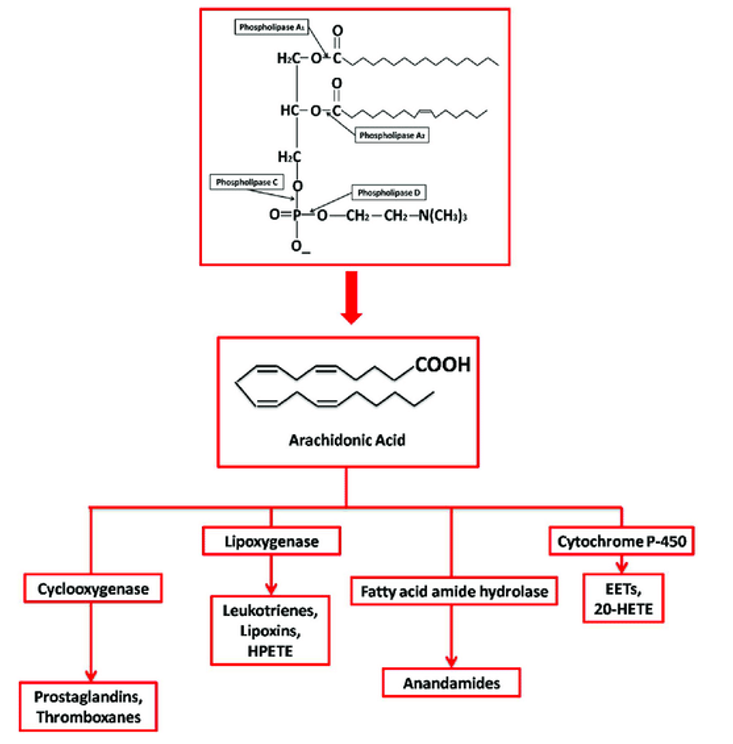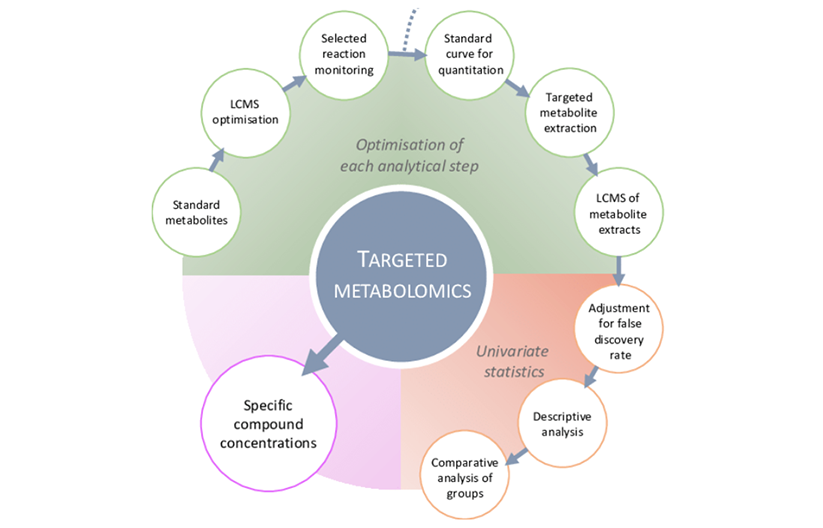Arachidonic acid (AA) is the most widely distributed endogenous active substance in living organisms. The metabolic pathway of arachidonic acid includes three pathways: cyclooxygenase (COX), lipoxygenase (LOX) and cytochrome P450 (CYP450), which constitute a metabolic network that is inextricably linked to the development and elimination of inflammation in the body.

Synthesis and metabolization of Arachidonic Acid (Tyagi et al., 2020)
More than 60 metabolites of arachidonic acid have been identified, covering mainly small molecules of prostaglandins, thromboxanes, leukotrienes and hydroxy fatty acids. Some of the metabolites of arachidonic acid have similar molecular structures, exist as isomers, and are present in very low levels in biological samples. The development of chromatographic and mass spectrometric techniques has provided accurate detection methods for the detection of arachidonic acid and its metabolites.
GC-MS analysis of samples requires tedious pretreatment to make methyl or ethyl esters of thermally unstable metabolites before detection, which is suitable for the detection of arachidonic acid metabolites with low boiling points or thermally stable metabolites, and not for the analysis of thermally unstable metabolites, such as EETs. LC-MS as well as UHPLC-MS /MS methods are convenient for the detection of more classes of arachidonic acids and their derivatives.
Creative Proteomics provides arachidonic acid targeted metabolomics analysis services to facilitate a variety of inflammation-related studies.
- Study on the mechanism of action of anti-inflammatory drugs
Targeted metabolomics of arachidonic acid can be used to analyze the changes of arachidonic acid metabolites after the action of anti-inflammatory drugs in the body, so as to explore the pathway and mode of action of drugs and arachidonic acid, and achieve the purpose of studying the mechanism of action of anti-inflammatory drugs.
- Pathogenesis of inflammation-related diseases
Targeted metabolomics of arachidonic acid can be used to explore the pathogenesis by analyzing changes in the levels of arachidonic acid metabolites during the pathology of inflammation-related diseases, and can also be applied to the study of direct and indirect mechanisms of action of arachidonic acid metabolites in inflammation-related diseases.
- Biomarker Discovery
Qualitative and quantitative studies of metabolites in multiple physiological/pathological or different disease model situations allow the discovery of differential metabolites that can contribute to the diagnosis and prevention of disease.
- Drug Development
Drug design can be based on targeted interference with the arachidonic acid metabolic pathway to promote or inhibit the production of its metabolites, such as PGE2 and EETs, so that the drug can exert specific effects. By combining arachidonic acid targeted metabolomics technology with disease pathogenesis, drug research and biomarker screening, we can systematically investigate the changes of arachidonic acid metabolic network in the body under the effect of diseases or drugs.
References
1. Tyagi, A., Kamal, M. A., & Poddar, N. K. (2020). Integrated pathways of COX-2 and mTOR: Roles in cell sensing and Alzheimer's disease. Frontiers in Neuroscience, 14, 693.
2. Allwood, J. W., Williams, A., et al. (2021). Unravelling Plant Responses to Stress—The Importance of Targeted and Untargeted Metabolomics. Metabolites, 11(8), 558.
